Paris is a dream destination for many—and one of the best ways to experience it is through its legendary food. From rustic stews to indulgent pastries, Parisian cuisine is a feast for the senses.
Whether you’re strolling the Seine, remote-working from a Marais café, or diving into your first boulangerie experience, this guide explores the 10 most iconic French foods you must try in Paris—now with added cultural and travel insights for those who want more than just a taste.
Best French Foods You Must Try
Cuisses de Grenouille (Frog Legs)
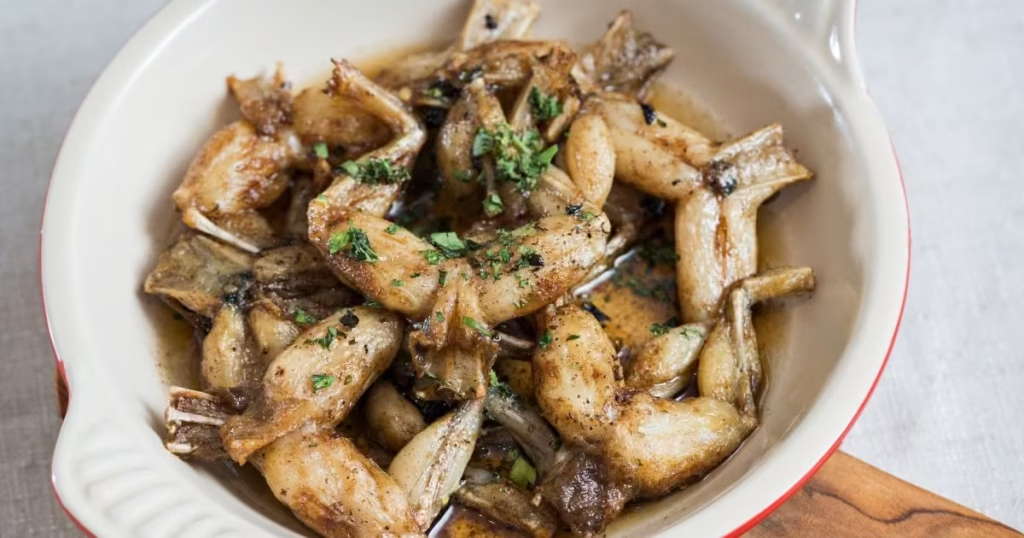
Served pan-fried in butter, garlic, and parsley, frog legs are a delicacy that may surprise you. Their texture is often compared to chicken wings—light, tender, and slightly springy. While the idea might seem adventurous, their flavor is subtle and delicious.
Cultural Insight:
Frog legs are traditionally associated with rustic French country cooking and were historically consumed during Catholic fasting periods. While not as common in modern Paris as croissants or cheese, they remain an enduring symbol of French culinary bravery.
Dining Tip:
If you want to impress your French friends, eat the frog legs with your hands—just as locals do in many bistros. They’re often served as appetizers with lemon wedges and a side salad.
Nomad Tip:
For digital nomads looking to immerse themselves in Parisian food culture, trying a “fear food” like this is a great conversation starter. Look for small, locally run restaurants in the Latin Quarter or Montmartre to experience a more authentic, budget-friendly version.
Crêpe Suzette

A true French classic, crêpe Suzette features delicate pancakes bathed in a caramelized sauce of orange juice, butter, sugar, and a splash of Grand Marnier. It’s often flambéed at your table—adding both flavor and drama.
Cultural Insight:
Legend has it that crêpe Suzette was created by accident in the late 1800s when a waiter flambéed the dish in front of the Prince of Wales (later King Edward VII). It’s now a symbol of French dessert artistry.
Dining Tip:
Try it in a classic Parisian brasserie or at a dedicated crêperie in Montparnasse. Look for places that flambé it tableside—it’s part of the charm. For a non-alcoholic version, you can ask them to skip the liqueur.
Nomad Tip:
Montparnasse is a great place for digital nomads to live short-term, with access to crêperies, coworking cafés, and RER trains. Crêpe Suzette is also a popular late-evening treat—perfect after a long workday.
Coq au Vin
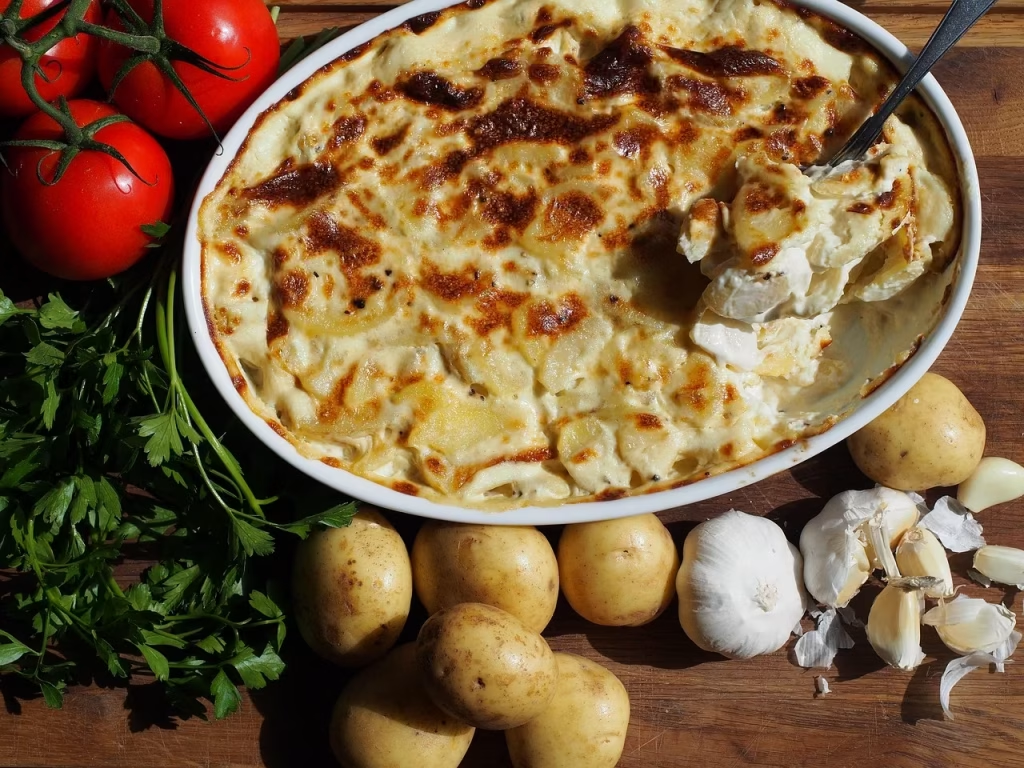
Coq au vin is a slow-cooked dish of chicken braised in red wine with lardons, mushrooms, and pearl onions. It’s one of France’s most beloved comfort foods, especially during fall and winter.
Cultural Insight:
Originally a peasant dish, coq au vin used older roosters (coqs) and slow cooking to tenderize the meat. Over time, it evolved into a gourmet staple, often served at family gatherings and special occasions.
Dining Tip:
This dish is best enjoyed in a cozy, dimly lit bistro with a glass of Burgundy wine. Some places offer coq au vin made with white wine (coq au riesling), which has a lighter flavor—ask the chef what version they serve.
Nomad Tip:
If you’re staying in Paris for a few weeks or months, try taking a cooking class where you can learn how to make coq au vin from scratch. It’s a great way to understand French culinary traditions and meet locals or fellow travelers.
Raclette
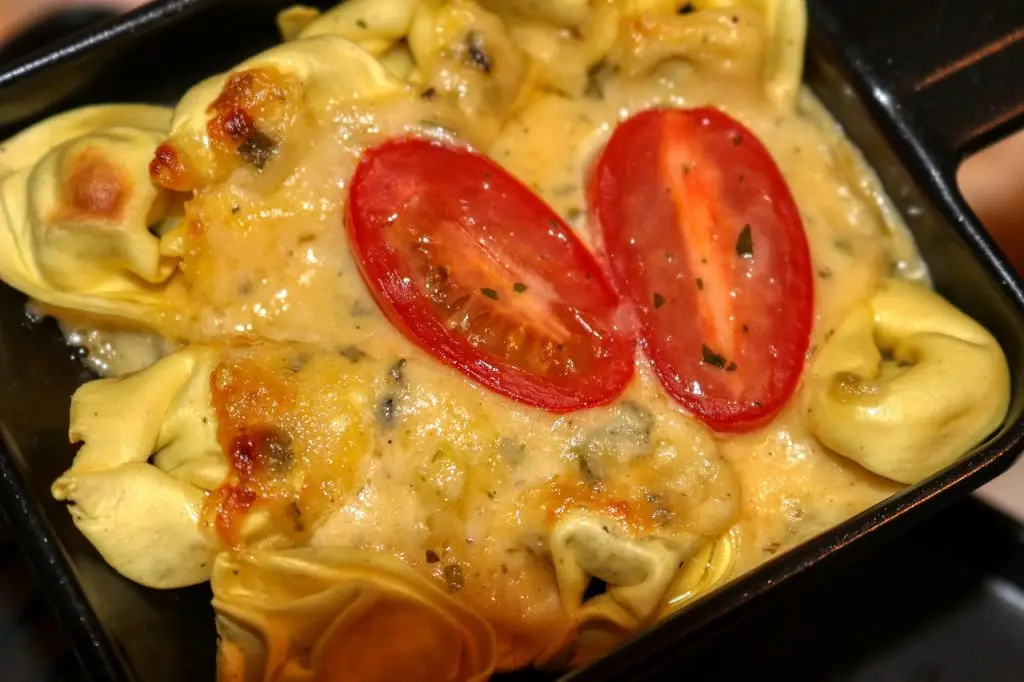
Raclette isn’t just a dish—it’s an event. Melted cheese scraped onto potatoes, bread, pickles, and meats, raclette is a warm, social experience usually shared among friends.
Cultural Insight:
Originating from the Alpine regions of France and Switzerland, raclette was traditionally prepared by placing a block of cheese near a fire and scraping the melted part onto plates. It’s now popular across Paris, especially in winter.
Dining Tip:
Visit a specialty raclette restaurant in Le Marais or Montmartre. Many places offer personal mini-raclette grills at your table so you can melt your own cheese—perfect for Instagram and indulgence.
Nomad Tip:
Hosting a raclette night in your Airbnb is a fun, affordable way to connect with other digital nomads. Visit a local fromagerie, buy a half wheel of cheese, and rent a raclette machine (available at many Paris appliance shops or Airbnb hosts).
Tartiflette
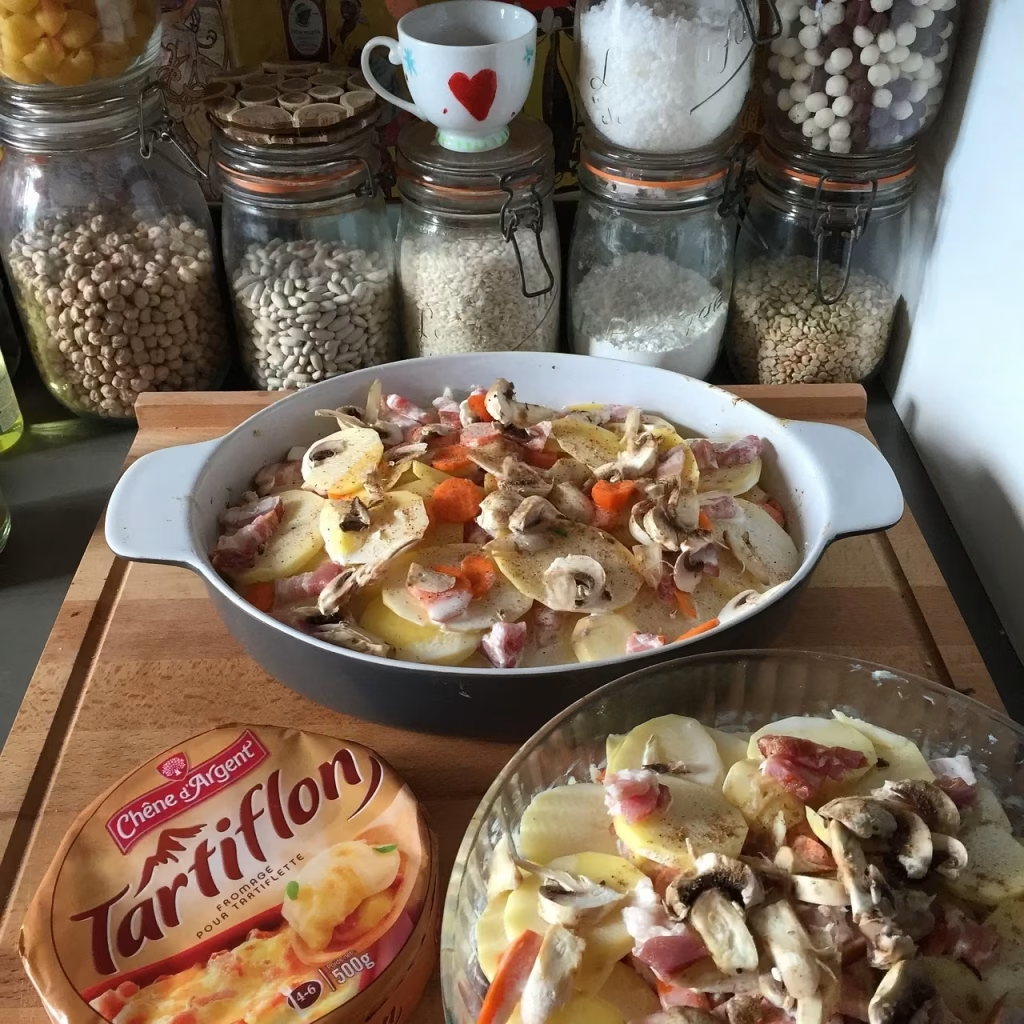
Tartiflette is pure Alpine comfort: thinly sliced potatoes baked with onions, smoky bacon (lardons), cream, and Reblochon cheese until bubbling and golden. It’s hearty, rustic, and deeply satisfying.
Cultural Insight:
Although it looks ancient, tartiflette was actually invented in the 1980s as a marketing move by the Reblochon cheese industry. It quickly became a beloved winter dish throughout France, especially in ski towns.
Dining Tip:
Seek out Alpine-themed restaurants during the colder months. Many offer tartiflette as a seasonal special. For the full experience, pair it with a crisp white Savoie wine or a glass of hard cider.
Nomad Tip:
Tartiflette is one of the easier French dishes to cook at home. If you’re a remote worker with access to a kitchenette, buy ingredients at a local market and make it yourself—you’ll impress your guests and save money.
Croissant & Pain au Chocolat
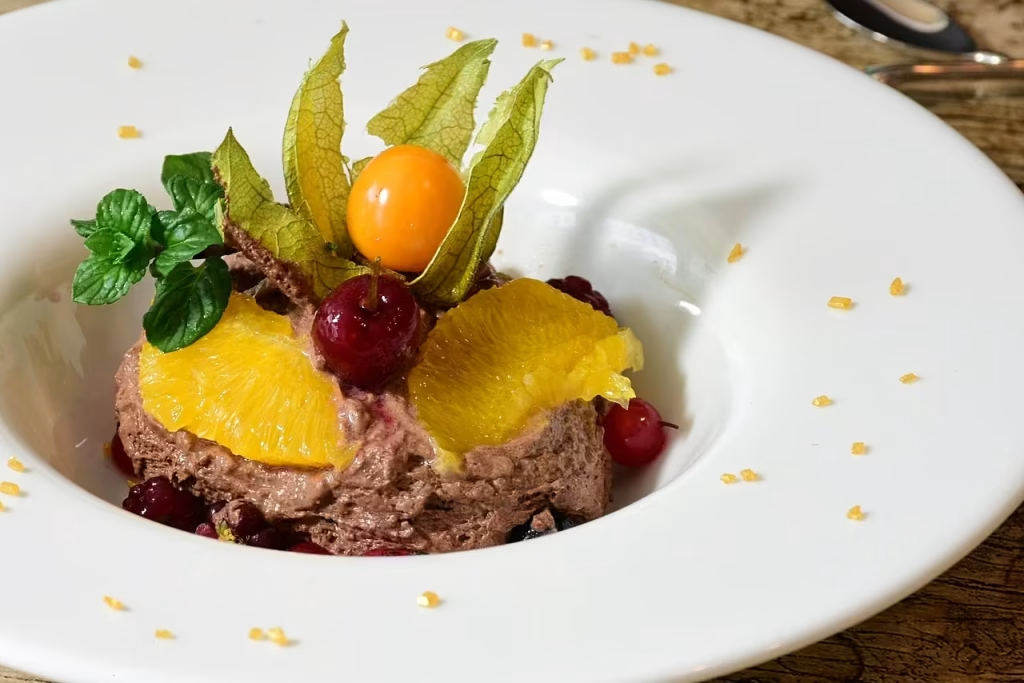
A staple of Parisian mornings, the croissant is buttery, flaky, and best eaten fresh. Its cousin, pain au chocolat, is similar but contains two bars of rich dark chocolate. Together, they’re the ultimate start to your day.
Cultural Insight:
Croissants are originally Austrian, introduced to France in the 19th century. French bakers perfected the dough and technique, making the croissant the national treasure it is today.
Dining Tip:
Not all croissants are created equal. Skip supermarket bakeries and look for artisanal boulangeries with the “Boulanger de France” label. Go early in the morning for the freshest batch.
Nomad Tip:
For digital nomads working from cafés, order “un café et un croissant” to blend in with locals. Many Parisian cafés don’t offer Wi-Fi, so scout out ones near coworking spaces or libraries if you plan to stay long.
Bone Marrow (Os à Moelle)
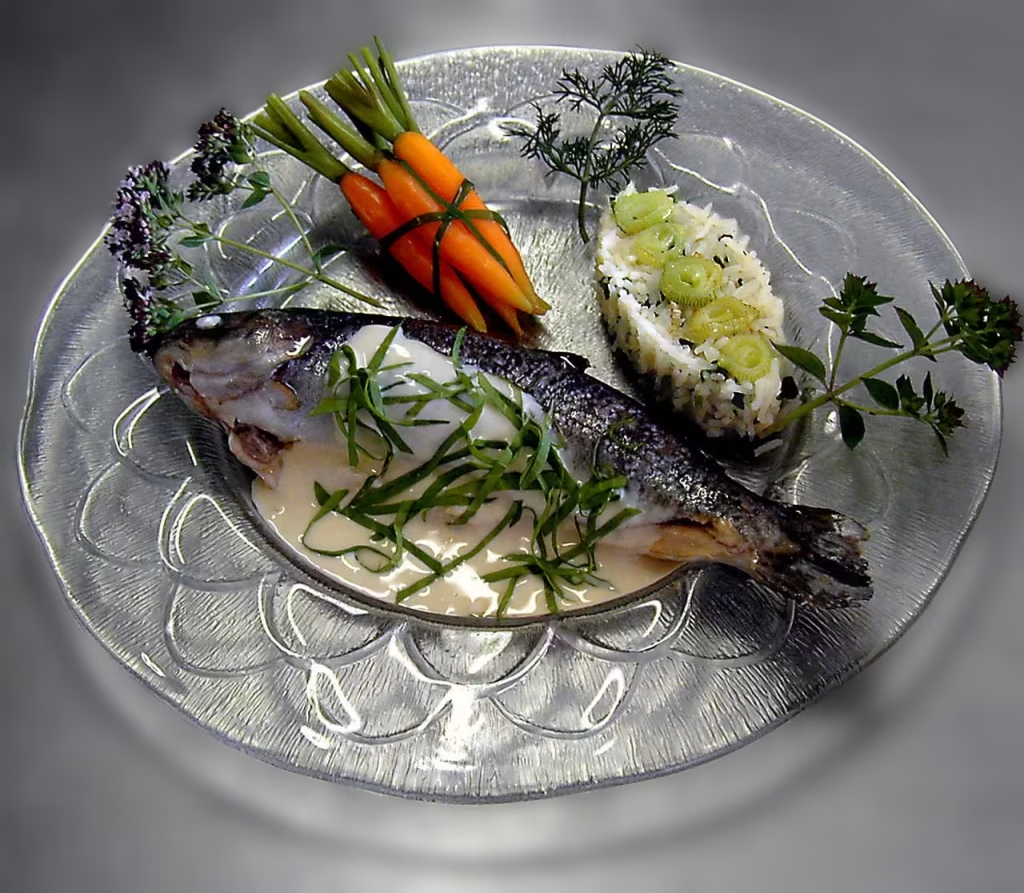
Bone marrow is one of those French delicacies that’s rich, fatty, and unapologetically decadent. Served in split bones and roasted to perfection, it’s usually accompanied by toast and sea salt.
Cultural Insight:
Eating bone marrow dates back to medieval times in France. It was once seen as food for the poor, but today it’s a gourmet delicacy found in high-end restaurants and brasseries.
Dining Tip:
Ask your server how to eat it if you’re unsure. Most people scoop the marrow out with a small spoon and spread it on toast with salt, pepper, or pickled vegetables.
Nomad Tip:
This dish is perfect for foodies living in Paris long-term who want to explore offbeat local favorites. Check out places like Le Comptoir du Relais for authentic versions that won’t break your budget.
French Onion Soup

A staple of brasserie menus, French onion soup features caramelized onions in beef broth, topped with a chunk of bread and melted Gruyère cheese. It’s warming, savory, and totally comforting.
Cultural Insight:
Originally a dish of the working class, French onion soup became popular in the 18th century. Today, it’s a comforting classic often served in ceramic bowls with cheesy lids baked onto the top.
Dining Tip:
Try it in colder months—ideally in a vintage café with tiled floors and worn wooden chairs. The soup can be heavy, so it’s often served as a main course, not just a starter.
Nomad Tip:
You’ll find French onion soup at many restaurants near Notre-Dame and the Latin Quarter. It’s also a great lunch option for digital nomads seeking a satisfying, sit-down meal under €15.
Boeuf Bourguignon

Slow-braised beef cooked in red wine with carrots, garlic, onions, and herbs—boeuf bourguignon is rich, aromatic, and steeped in tradition. It’s the epitome of French home cooking.
Cultural Insight:
This dish hails from the Burgundy region, where wine is part of the culinary DNA. Julia Child famously introduced it to American audiences, turning it into an international favorite.
Dining Tip:
Look for it on daily specials menus (“plats du jour”). It’s typically made fresh in smaller batches and served with potatoes or fresh bread to soak up the sauce.
Nomad Tip:
If you’re staying in a Paris apartment with a kitchen, consider making your own boeuf bourguignon on a Sunday. Many Airbnb kitchens are well-equipped, and local markets sell affordable stew meat and wine.
Éclair
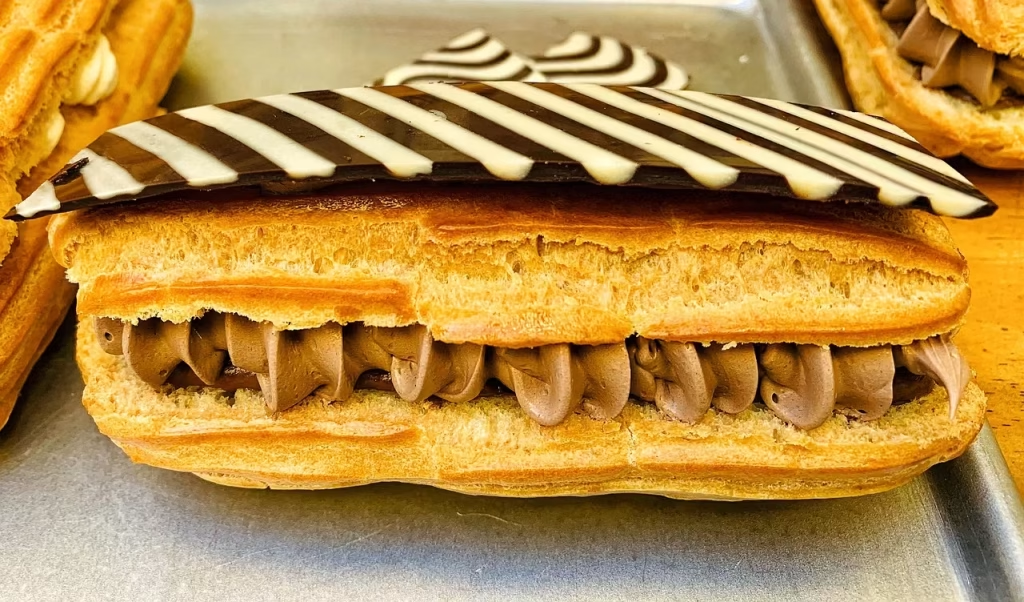
An éclair is a long, choux pastry filled with cream and topped with icing—often chocolate, coffee, or exotic flavors like pistachio or passionfruit. It’s elegant, portable, and utterly Parisian.
Cultural Insight:
The word “éclair” means “flash of lightning” in French, likely referring to how fast they’re eaten. These pastries were created in the 19th century and remain a top seller in Parisian patisseries today.
Dining Tip:
Skip chain bakeries and head to high-end patisseries like Pierre Hermé or Stohrer. For something modern, try flavors like yuzu, rose, or salted caramel butter.
Nomad Tip:
For a productive afternoon, grab a gourmet éclair and a coffee and settle into a quiet café with Wi-Fi. Many patisseries now offer seating areas perfect for quick laptop sessions.
🧳 Final Thoughts: Taste Paris One Bite at a Time
Paris is more than just monuments and museums—it’s a sensory experience, and food is its language. From flaky croissants to bubbling cheese dishes and rich stews, these 10 foods offer a direct connection to the city’s soul.
Want the ultimate Paris experience? Explore the markets, try regional specialties, and don’t be afraid to eat like a local—even if that means frog legs. You’ll come home not just full—but transformed.



